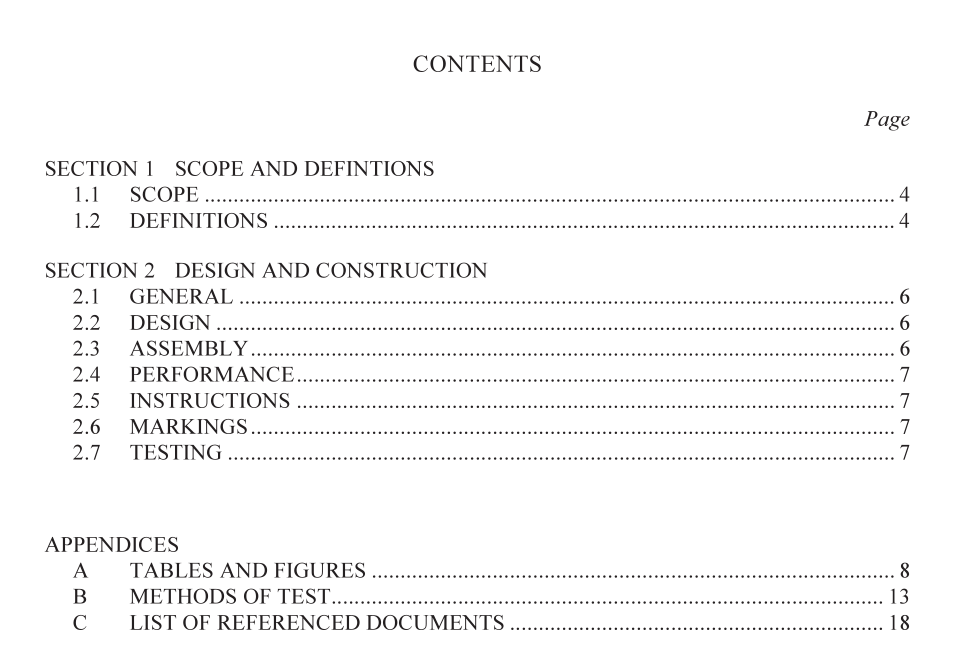AS 4566 pdf download – Flue cowls—Gas appliances

AS 4566 pdf download – Flue cowls—Gas appliances
2.1GENERAL
A flue cowl shall be made of non-combustible corrosion resistant material. Metals shall notbe used in combinations such as to cause detrimental galvanic action,which will adverselyaffect any part of the assembly.
2.2 DESIGN
2.2.1 Attachment without alteration
Flue cowls shall be designed for ready attachment to the flue terminal without requiringalteration, cutting, threading, drilling, and welding or similar tasks by the installer.
2.2.2 Free from obstruction
Flue cowls shall be designed such that,when installed, it is not possible for any part of theflue or cowl to be obstructed in a manner that could adversely affect the intended operationof the flue.
2.2.3 Rain and debris entryFlue cowls shall be designed
(a) to prevent the entrance of debris and excess rain into the flue; and
(b)so that leaves and debris falling or blown onto it are not likely to be retained and
hence obstruct flue gas passages.
2.2.4 Opening size
In order to ensure against the entry of birds no opening shall permit the entry of a ball of16 mm diameter.
2.2.5 Fit to standard flue pipes
Flue cowls shall be sized to fit readily onto standard size flue pipes. In particular, for singlewall metal flue pipe, the diameter of the flue cowl socket shall conform to Table 2.1.
2.3 ASSEMBLY
2.3.1 Use of screws
If screws are employed to join the flue cowl to the flue terminal, the latter shall readily receive screws without being punched or drilled. If cement is employed for this purpose,the cement shall be a quick-setting type.\
2.3.2JointsA joint shall—
(a) be a good fit when made up in accordance with the manufacturer’s instructions; and(b)not materially reduce the capacity of the flue.
2.4 PERFORMANCE
2.4.1 Flue pressure differential
A flue cowl for direct attachment to a flue terminal shall not produce a static pressuredifferential exceeding 8.5 Pa when the air velocity in the flue pipe is 3 m/s. In the case ofrectangular flue pipes equivalent diameter for the purpose of air velocity calculation shallbe obtained from Table Al.
2.4.2 Flue pressure differential in wind
A flue cowl for direct attachment to a flue terminal shall not produce a static pressuredifferential exceeding 17 Pa positive when the air velocity in the flue pipe is 3 m/s andwinds up to a maximum of 65 km/h are directed against it from any angle. In the case ofrectangular flue pipes equivalent diameter for the purpose of air velocity calculation shallbe obtained from Table Al.
2.4.3 Flue cowl static pressure
A flue cowl for direct attachment to a flue terminal shall produce a negative static pressureof no less than 8.5 Pa with no flow in the flue and winds ranging from 32-65 km/h directedagainst it from any angle.
2.4.4 Strength of flue cowl
A flue cowl shall resist,without damage or permanent distortion, a wind of 95 km/h fromany direction.
2.4.5 Rain resistance of cowl
The quantity of rainwater entering the flue with the flue cowl in place shall not exceed 2%of that which would enter the flue if unprotected by a flue cowl.
2.5INSTRUCTIONS
Installation instructions shall be provided by the manufacturer for all flue cowls.
These shall contain description of the parts required and the step-by-step process ofinstalling the flue cowl, its methods of support if required and the manufacturer’s name andaddress.
The distances and clearances shall be as required by the authority but in any case shall beno less than those given in AS 5601.
2.6MARKINGS
Each individual flue cowl shall be permanently marked with the manufacturer’sidentification and model number as well as the certificate of compliance number obtainedfrom a certifying body.









